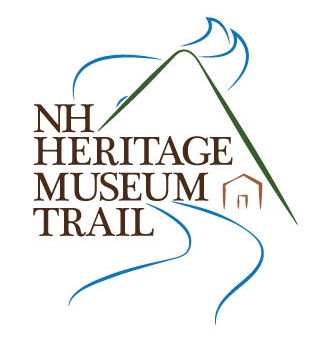Volunteers Make a Difference on New Hampshire Heritage Museum Trail
Castle in the Clouds Volunteers. Photo by Colleen Crowley
Volunteering is a fun and enriching experience on the New Hampshire Heritage Museum Trail, which features nearly two dozen member institutions across the Granite State.
“It’s wonderful to welcome people as a greeter at the Folsom Tavern,” said Dawn Jelley, who volunteers at the American Independence Museum (AIM). “I’ve been volunteering for the past six years, and I love it.”
Home to 3,000 historic artifacts, including an original copy of the Dunlap Broadside (Declaration of Independence), AIM develops programs, events, and exhibits that engage people of all ages in the ongoing struggle for freedom and self-governance. “Without volunteers, AIM cannot engage anyone with this mission,” said Dr. Robert Levey, Interim Executive Director at AIM. “Volunteers like Dawn are invaluable.”
To learn more about the volunteer opportunities at AIM, visit independencemuseum.org or email volunteer@independencemuseum.org.
At Castle in the Clouds in Moultonborough, Paula said she enjoys the human connection she experiences as a volunteer. “I know that I will meet at least one guest who makes me smile each day,” she said. “I encourage all who have the time and interest to volunteer at Castle in the Clouds.”
A 6,300-acre property built in 1913-1914, Castle in the Clouds welcomes visitors from across the world. To learn more about the volunteer opportunities at Castle in the Clouds, visit castleintheclouds.org or email volunteers@castleintheclouds.org.
According to Jeff Barraclough, Executive Director of the Millyard Museum in Manchester, volunteers are the “unsung heroes” of their operation. “We operate on tight margins, so the in-kind contributions by volunteers in the form of time and energy are priceless,” he said.
Operated by the Manchester Historic Association, the Millyard Museum features rotating exhibitions and the Discovery Gallery, which is a multi-purpose space used for school groups, family programs, lectures, temporary exhibits, and other activities. To learn more about the volunteer opportunities at the Millyard Museum, visit manchesterhistoric.org or email history@manchesterhistoric.org.
For Barraclough, however, the main takeaway is the impact volunteers have on the visitor experience across The Trail. “Volunteers make a huge difference in our respective abilities to educate and inspire people of all ages,” he said. “We are so grateful for volunteers.”
For Jelley, though, her personal takeaway is the fun she experiences as a volunteer, especially at AIM’s Folsom Tavern (1775). “It is wonderful to welcome people back to 1775 and to visit the tavern like they would have back when it opened its doors,” she said.
